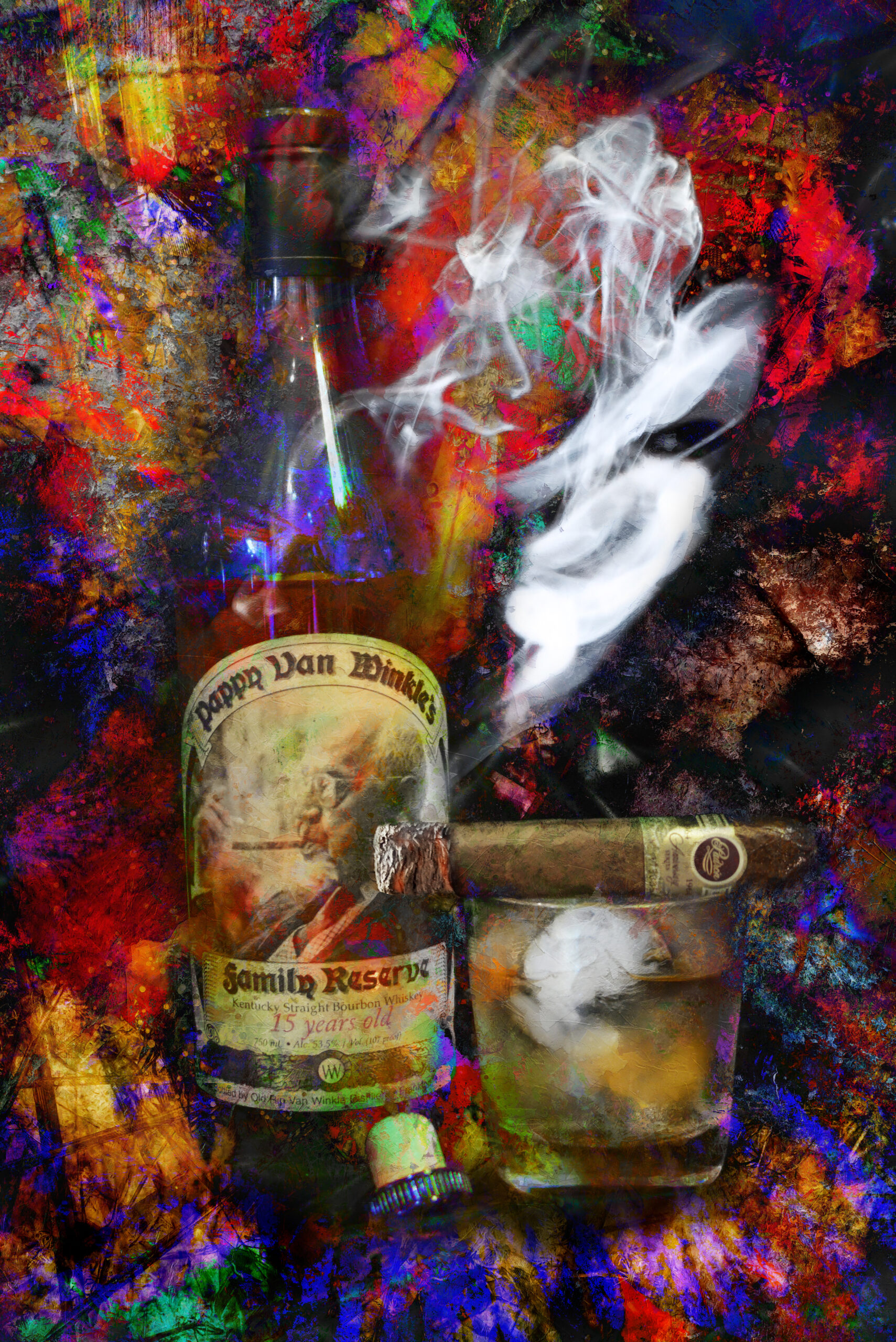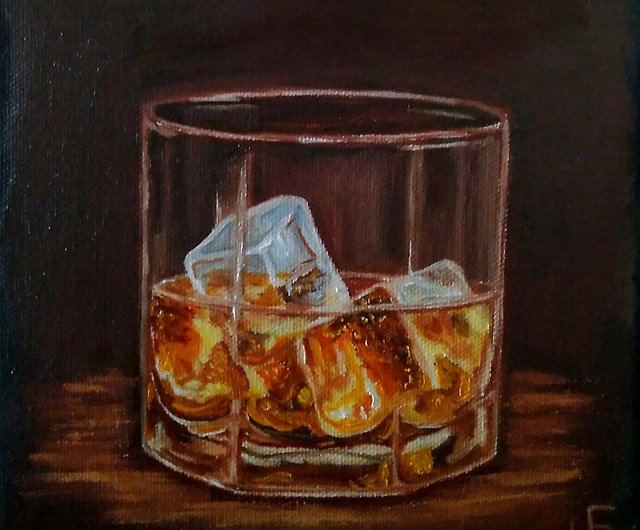Limited Edition Bourbon Art: Why Collectors Are Gathering to Unique Finds
Limited Edition Bourbon Art: Why Collectors Are Gathering to Unique Finds
Blog Article
The Importance of Whiskey Art in Celebrating Heritage and Craftsmanship in the Beverage Sector
The complex relationship between scotch art and the celebration of heritage and craftsmanship within the drink sector can not be overemphasized. Through attentively designed labels and bottles, scotch brand names envelop their historical origins and the artisanal skills that specify their manufacturing approaches. This creative measurement not just improves market charm but likewise serves as an avenue for cultural narration, cultivating a deeper link between the customer and the craft. As we explore the different aspects of this topic, intriguing concerns concerning the influence of modern-day patterns on conventional methods develop, triggering more examination.
The Historic Roots of Whiskey
At the heart of scotch's appeal lies a rich tapestry of historic origins that trace back to old civilizations. The beginnings of scotch can be connected to the distillation practices of the Sumerians and Babylonians around 2000 BCE, where early kinds of fermented grain beverages began to arise. Nevertheless, it was in the Middle Ages that the art of distillation advanced dramatically, particularly in Ireland and Scotland, causing the development of scotch as we understand it today.
The term "whiskey" itself stems from the Gaelic word "uisce beatha," suggesting "water of life." This expression underscores the social relevance of bourbon in Celtic societies, where it was frequently related to rituals, events, and communal bonding. By the 15th century, purification came to be an identified craft within monastic communities, leading the means for the facility of legal distilleries.
As trade paths expanded, scotch's popularity grew, going beyond regional limits and capturing the rate of interest of aficionados worldwide. Realism Art. This historic trip shows not only the craftsmanship behind bourbon manufacturing but likewise its important function in social and cultural contexts, marking it as a considerable drink throughout history
Artistic Expression in Branding
Scotch branding stands as a compelling crossway of artistry and commerce, where visual identification plays an important function fit customer perception. The visual appeals of whiskey tags, product packaging, and advertising products reflect not just the brand's tale but additionally its core worths and heritage. With creative expression, distilleries share a story that resonates with customers, stimulating feelings and triggering links.
Using color, typography, and images in branding offers to separate products in a saturated market. For example, traditional themes may evoke a feeling of authenticity and workmanship, while modern layouts can represent development and forward-thinking. This critical creative instructions improves brand name recognition and loyalty, enabling customers to create an individual connection with the scotch they choose.
Moreover, imaginative expression in branding typically offers as a party of local heritage. Distilleries frequently integrate neighborhood symbols or historic references into their designs, creating a sense of area that invites customers to engage in a broader social experience. Inevitably, the artistry behind whiskey branding not just enhances aesthetic allure yet additionally enriches the general story of the brand name, fostering a deeper admiration for the craftsmanship and heritage ingrained in each bottle.
Craftsmanship in Bottle Style
The artistry noticeable in whiskey branding expands beyond aesthetic identification to incorporate the craftsmanship involved in container style. Each container offers as a vessel not just for the spirit within, however also for the tale it outlines its quality, tradition, and origin. The layout process needs precise focus to detail, as aspects such as closure, shape, and product contribute substantially to the overall assumption of the whiskey.
Workmanship in bottle style entails picking top notch glass that can improve the bourbon's shade and clearness, while additionally giving a tactile experience for the customer. The silhouette of the container should be both practical and cosmetically enticing, commonly mirroring the heritage of the brand. Lots of distilleries select unique shapes or printed logos that evoke a sense of authenticity and history.
In addition, the label style and typography play an essential function in communicating the brand name's narrative. Realism Art. A well-crafted container not just captivates the customer's eye however likewise strengthens the brand's dedication to quality and tradition. In this method, the craftsmanship of bottle design ends up being an essential element of the whiskey experience, combining creativity with an extensive regard for heritage
Cultural Value of Bourbon Art
Commemorating practice and craftsmanship, the social importance of bourbon art goes beyond simple aesthetic appeals, linking with the social and historical stories of the areas from which it stems. Each container functions as a canvas, depicting the distinct tales, folklore, and traditions that have actually shaped regional whiskey-making techniques. The complex layouts often reflect the heritage of the distillers, integrating symbols and motifs that reverberate with the culture and worths of their neighborhoods.

Additionally, whiskey art plays a crucial duty in communal celebrations and events, offering as a substantial link between individuals and their shared experiences. By appreciating the virtuosity in whiskey product packaging, consumers cultivate a deeper understanding and regard for the craft, inevitably enriching their enjoyment of the beverage itself.
Modern Trends in Whiskey Discussion
In the last few years, the discussion of scotch has actually developed to reflect contemporary preferences and patterns while still honoring conventional craftsmanship - Realism Art. Distilleries are significantly focusing on visual components that improve the overall drinking experience, connecting the void in between heritage and modernity
Cutting-edge container styles have arised, typically integrating lasting materials and imaginative labels that tell compelling tales. Many brands now work together with local musicians, instilling their products with distinct visual expressions that resonate with customers. In addition, limited-edition launches are often packaged in collectible containers, including value and charm for lovers.

Verdict
In final thought, bourbon art serves as an essential avenue for sharing the heritage and craftsmanship fundamental in the drink market. Through complex branding, innovative container styles, and culturally considerable artistic components, scotch brand names successfully recognize their practices and attach with customers.


Workmanship in container layout entails picking premium glass that can enhance the bourbon's shade and quality, while additionally offering a tactile experience for the consumer. In this means, the craftsmanship of container style comes to be an essential element of the bourbon experience, merging artistry with a profound respect for heritage.
In verdict, bourbon art offers as an essential channel for sharing the heritage and craftsmanship integral in the drink sector.
Report this page